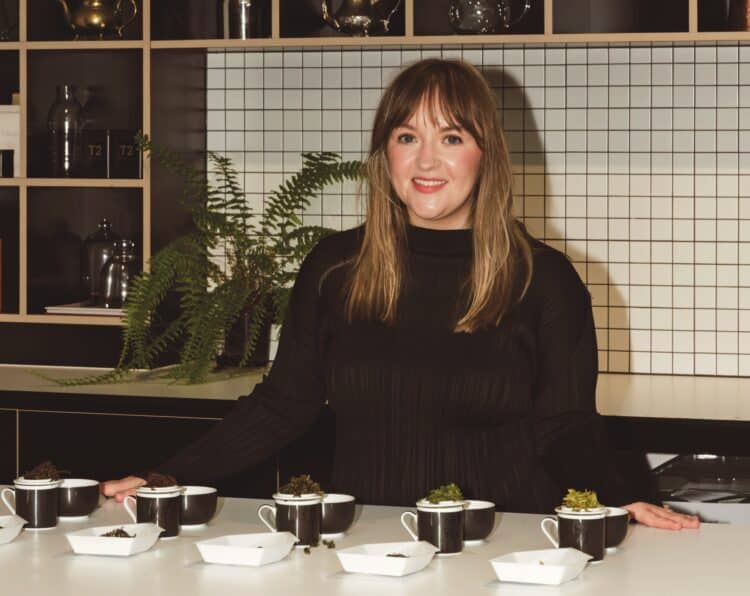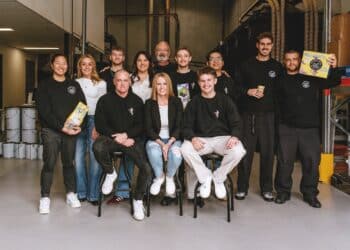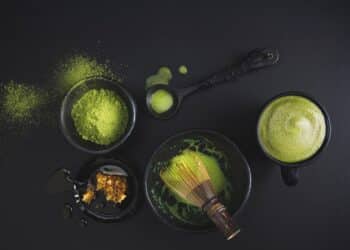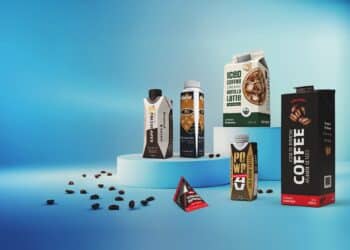While specialty coffee is firmly rooted in the Australasian psyche, interest in specialty tea is still somewhat niche. T2 explores the parallels between the two industries and how a thoughtfully curated tea offering can elevate a café’s credibility.
In just three decades, the way many people in Australia and New Zealand prepare coffee has changed dramatically. The third-wave movement revolutionised coffee drinkers’ approach to and value of their morning brew, not just highlighting the bean’s journey from plant to cup but also the skill and creativity of the many hands it passes through.
While coffee consumers have become much more discerning, the same care and attention is yet to be broadly embraced for its beverage bedfellow – despite their similarities in processing, terroir, and sustainability. Tea is still widely consumed at commodity grade with little thought put into the brewing process beyond how long the bag should be in the water.
However, the team at Melbourne-born tea specialist T2 are on a mission to show consumers the huge spectrum of flavours the plant can deliver. More specifically, they believe hospitality venues are missing out on the opportunity to tap into the growing specialty tea movement.

What is specialty tea?
Unlike specialty coffee beans that earn the title through achieving scoring criteria implemented by the Specialty Coffee Association, there is no official governing body in the tea industry that implements specific criteria products must reach to be called ‘specialty tea’.
Organisations such as the European Speciality Tea Association (ESTA) are actively working to establish clear definitions and standards, and have proposed factors such as known supplier, farm, location, production dates, and processing methods to distinguish specialty teas from commodity teas. However, these efforts are still in development and no global consensus has been reached.
“Tea is a bit more nuanced – it’s all about interpretation,” says Sally Morris, Senior Buyer and Product Developer at T2.
“When we think about specialty teas at T2, we are referring to single-origin teas that are rare and special. These can be traditional Chinese teas, region-specific teas, or newer varieties coming out of places such as Nepal, New Zealand, or Hawaii.”
Despite the term ‘specialty’ being less regimented in the tea industry, Sally says there are many parallels with the coffee sector. She explains that in the same way all Arabica coffees are part of the Coffea Arabica species, all true teas (not tisanes such as peppermint or chamomile) are part of the Camellia Sinensis species, with variation coming from different cultivars and processing methods.
“For the production of specialty tea, the leaves are picked by hand and processed as a whole leaf, which delivers the best flavours. It’s very different from the commodity market, where teas are sieved using large machinery to produce a fine particle – similar to ground coffee – for use in conventional tea bags,” says Sally.
“All the teas we know and love from across the world – from white and green to oolong and pu’erh – come from the same plant. It’s the way the plant is processed that determines the flavour and drinking experience.”
The flavour differences in teas largely come down to whether the process of oxidation is encouraged or prevented.
“On one end of the scale is white tea – the least processed – which is picked, allowed to wither, and then dried. Something like shou pu’erh, on the other hand, is oxidised and fermented, which will yield a very different flavour profile,” explains Sally.
Like specialty coffee, terroir is also a major contributor to the final product. China is the world’s largest producer of tea – growing up to 2.2 million tons per year – with India and Kenya in second and third.
However, Sally says T2 is also exploring up-and-coming growing regions such as Hawaii and New Zealand. While neither are mass-market producers, she says they are highly regarded and helping redefine what tea origin can mean, especially for consumers who care about provenance, sustainability, and quality over quantity.
“Year on year, global tea yield is falling, so at T2 our sourcing principles focus on supporting an industry that champions the tea farmer and sustainable farming practices,” she says.
“Sixty per cent of the world’s tea comes from smallholder farmers and some of those are supporting incredible sustainability initiatives in biodiversity and regenerative farming. Through our sourcing principles we strive to support the growth of a truly sustainable industry.”
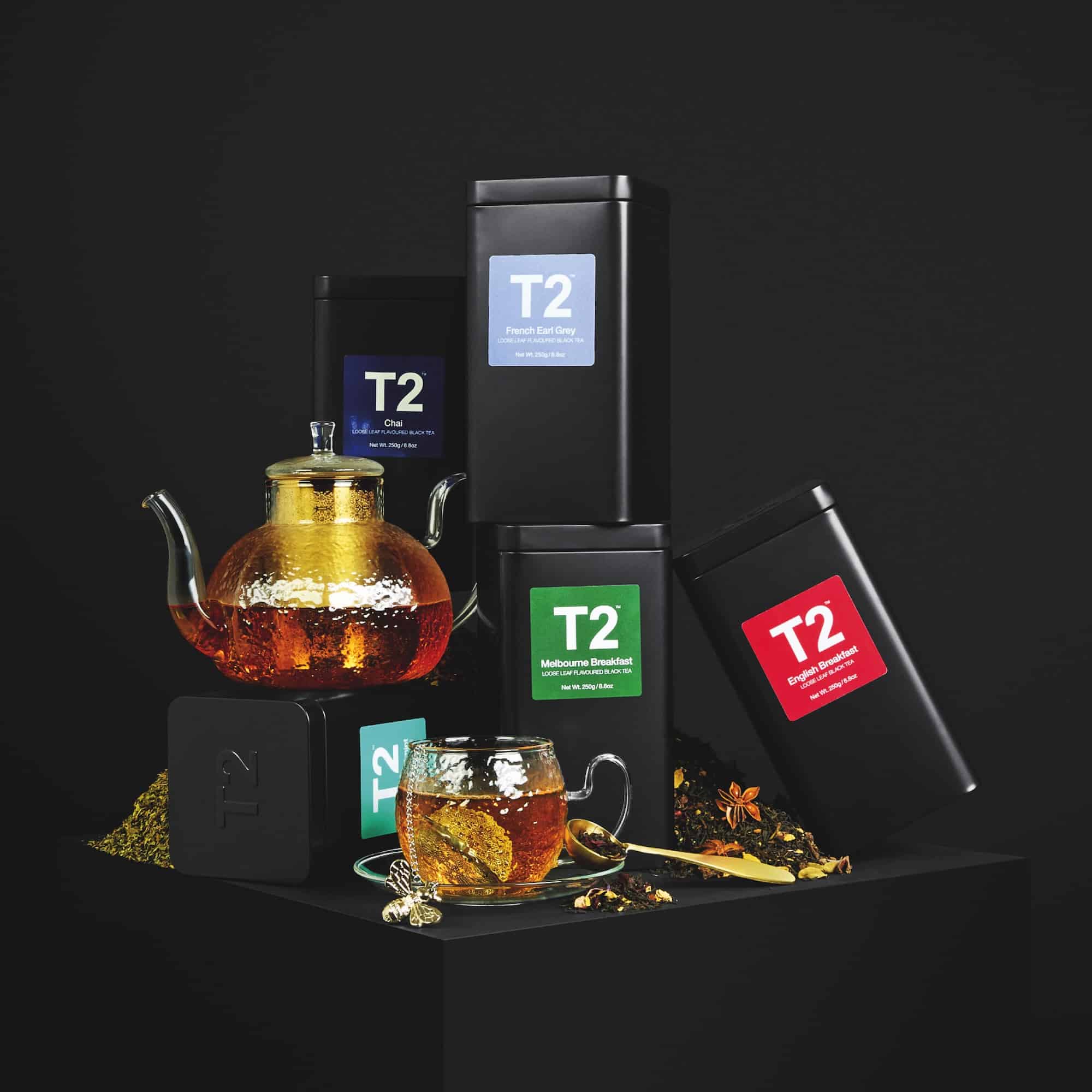
How to brew specialty tea
When brewing specialty tea, there are some simple rules to be followed. Like coffee, pouring boiling water directly onto the leaves can scorch them and negatively impact flavour.
“While some tea types can handle boiling water, for others it will scorch the leaves and bring out the bitter tasting flavonoids you don’t want,” says Sally.
“As a general rule of thumb, black tea can be brewed at about 100 degrees Celsius, white and oolong teas about 90 degrees Celsius, and green tea about 80 degrees Celsius. However, it’s all about experimenting to see which temperature gets the best out of the tea you’re preparing.”
In terms of equipment, Sally says you don’t need expensive kit to brew great quality tea.
“If you have a temperature-adjustable kettle and something to brew your tea in like a teapot with infuser or gaiwan, you’re good to go. Compared to coffee, it’s a much lower investment equipment-wise,” she says.
“Keeping the tea in an air-tight container is essential for freshness but also because tea is a great absorbent material and will soak up any aromas it’s stored near. In fact, tea has a much longer shelf life than roasted coffee as long as it’s stored correctly and out of direct sunlight.”
An opportunity yet to be explored
With so many similarities to the specialty coffee sector and a world of flavours waiting to be discovered, specialty tea holds many opportunities for the hospitality industry, according to Sally.
“Discerning coffee drinkers who appreciate the nuances of terroir will be amazed by the magic of specialty tea,” she says.
“A lot of people stop drinking coffee after midday so there’s huge opportunity for cafés to offer a range of specialty teas that are unique and diverse, and often lower in caffeine. For baristas who are passionate about the coffee they brew, there’s an opportunity to unlock an even wider spectrum of flavours.”
Preparing specialty tea draws on many of the existing skills baristas rely on every day, especially those who are experienced in producing pourover coffee.
“Using the expertise of the incredible baristas who are out there, I think we can get even more out of the tea world than anyone has before,” says Sally.
Sally says all T2’s products come with comprehensive brewing instructions and that the team are always available to discuss preparation techniques.
“At the moment, many cafés are yet to incorporate specialty teas into their menus, but when you look into the origins and the diversity of what you can achieve from one leaf, it’s mind blowing,” says Sally.
“There are tens of thousands of different teas out there that we should all be exploring.”
For more information, visit t2tea.com
This article appears in the August 2025 edition of BeanScene. Subscribe HERE.

